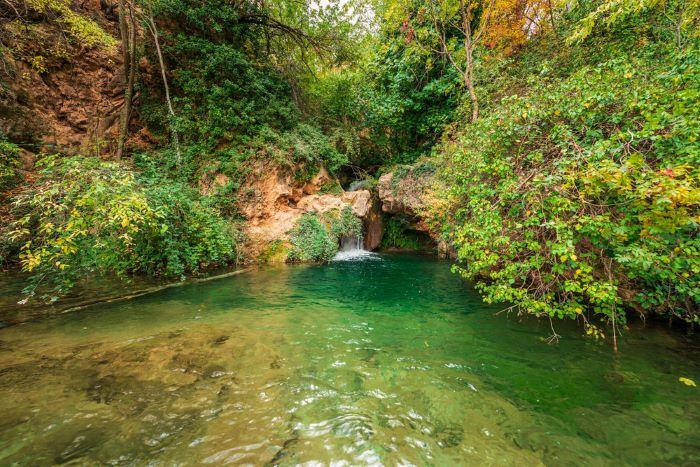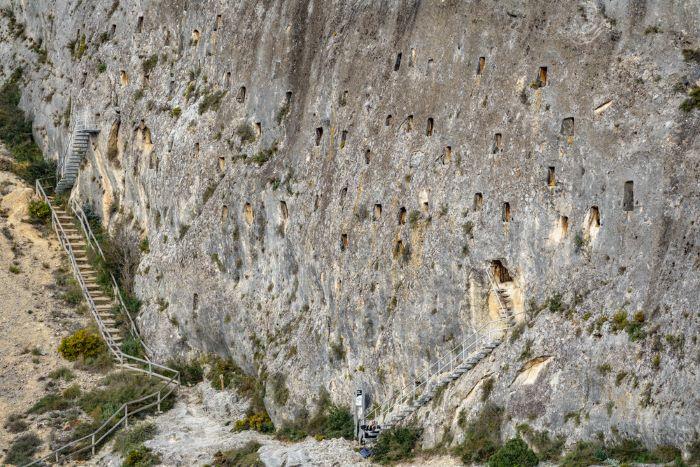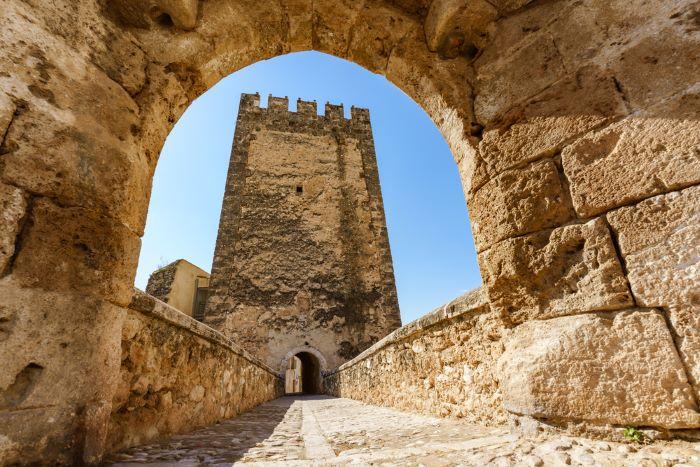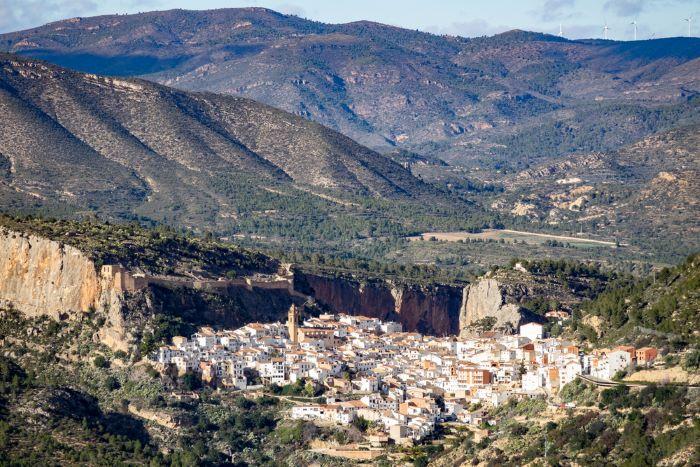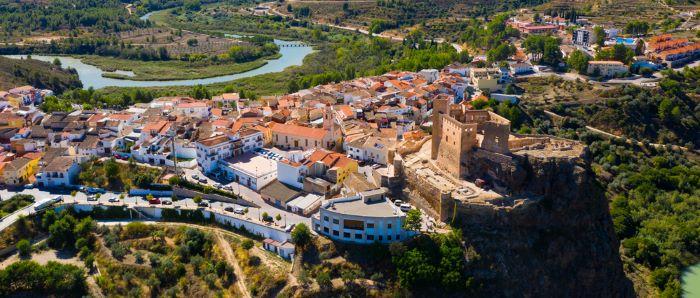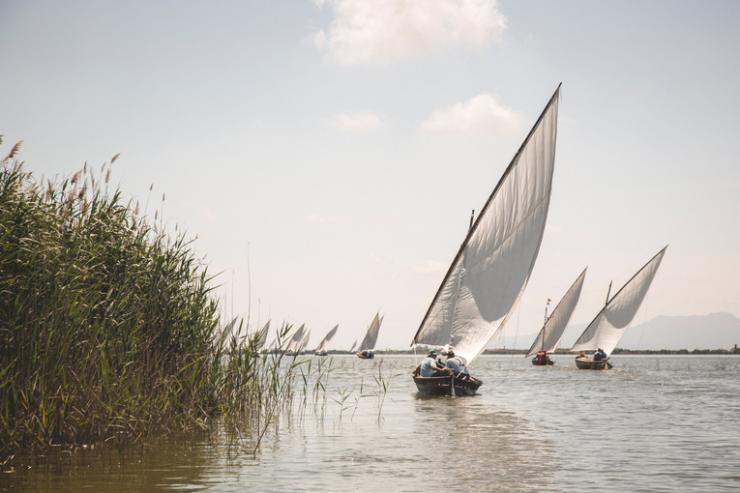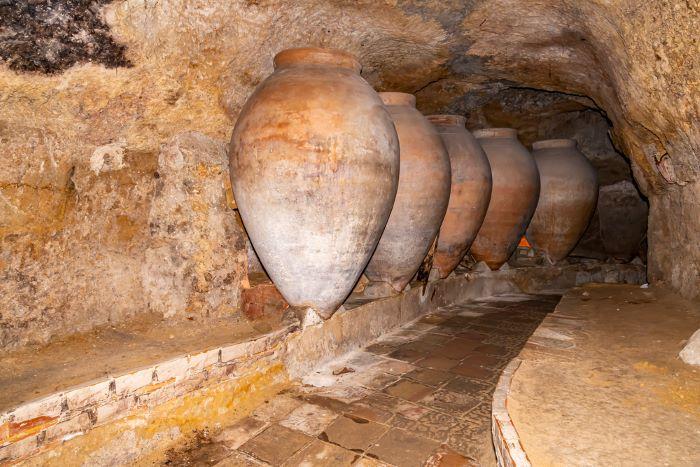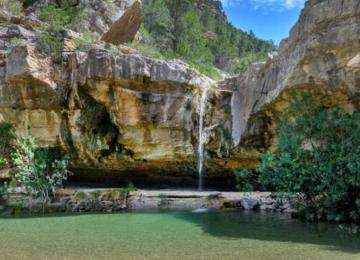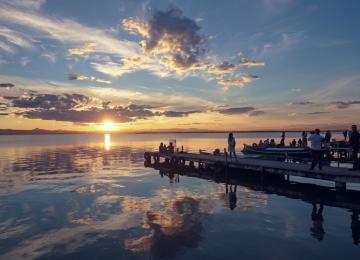The prettiest towns in the province of Valencia
Quite frankly, making a list of the prettiest towns in the province of Valencia is no easy task.
Across the length and breadth of the province there are so many villages and towns packed with history emanating from every corner, making this ranking a challenge.
We've got an abundance of towns with traces of their Roman and Muslim past, picturesque side streets and secluded squares where you can unplug and eat excellently. And all surrounded by untamed nature!
The fact is that the province of Valencia is privileged to contain a varied wealth of biodiversity within a few kilometres: you can be sunbathing on the beach and then turn up somewhere in the mountains within half an hour.
We have put together a list of several of the prettiest town in the province to give you some options to choose from, places where you can combine a charming town and stunning natural environment for a one-day getaway.
Let’s get going.
Ademuz
The first place on the list is a village in the Rincón de Ademuz district, between Teruel and Cuenca.
You know that bit of the Valencian Community that appears to be off the map? Well, that's where this district and the town that bears its name are located.
Ademuz is a picturesque town laid out along the slopes of Mount Zafranes and on terraces. From a distance, it is possible to make out the mantle of houses nestled together on the mountain, with Ademuz Castle at the top.
After wandering the cobbled streets, you must sample the empedrao (rice with pinto beans, ribs and blood sausage), pick up some of the excellent honey and a few apples, which are a local delicacy and come in many varieties.
And in the surrounding area, you can tour some of the seven villages and ten hamlets, or choose a hiking trail through Puebla de San Miguel Nature Reserve or along the Bohílgues River and its crystalline waters.
Ayora
Any list of the prettiest towns in the province of Valencia worth its salt must include Ayora, no matter what.
Why?
Well, because of its abundance of historic and artistic heritage. And its range of natural areas is no less important.
It is quite possible to say that Ayora is a historic town, wherever you may look. The most spectacular building – because of its size and because it presides over the town’s high point – is Ayora Castle.
But there is also the 16th-century Nuestra Señora de la Asunción Church; Santa María la Mayor Church, dating from the 13th century; and the Cross of San Antón, a perfectly preserved Gothic style covered cross. Not much, right?
Apart from these three wonders, when you stroll through the town, you’ll want to include the medieval streets of Los Altos neighbourhood; the old Jewish quarter, Santa Bárbara; and head to El Hueco neighbourhood to admire the Renaissance style buildings.
And to enjoy the natural surroundings, be sure to fit in a hike in La Hunde Nature Reserve and Palomera Peak.
Bocairent
Bocairent is one of the most visited towns in the province of Valencia because of how well preserved it is, with its historical and cultural charms in plain view.
The town has literally been dug out of the rock, and its medieval quarter was declared a national area of artistic and historical importance in 1975. Its peculiar relief, with densely crowded houses clinging to the mountain, gives it a special charm.
Be prepared to climb a few hills. We assure you, the effort is truly worth it.
In addition to strolling along its characteristics side streets, don't miss the chance to admire the Covetes dels Moros, a group of some 50 window-shaped caves halfway up a vertical wall of stone. All these openings give way to interconnected accessible chambers.
As if that were not enough, the town is situated in Sierra de Mariola Nature Reserve, which offers hiking options for travellers of all abilities.
Buñol
That Buñol has become famous the world round for the tomato throwing festival known as La Tomatina is indisputable. But that is also not its only attraction.
In fact, its cultural heritage includes such important sites as Buñol Castle, which dates to the 13th century and is so well preserved that it makes any visit a journey into the past.
The castle has two sections: the military and the residential. In the latter, keep an eye out for such wonders as the Gothic palace and Oscurico Room, El Salvador Church, and the mansion, which houses the Archaeological Museum.
So, start there and then check out the streets of the old town.
These are the must-sees: San Pedro Parish Church, San Luis Park and Galán Mill. And the village square to see the street where La Tomatina takes place every August.
Now that you're in Buñol, take the opportunity to do a bit of hiking and head to El Turche Cave and the pools on the River Buñol, a route featuring spectacular natural pools where you can take a refreshing dip. That's if you visit in summer, of course. In the winter, the water's a bit chilly.
Chelva
Chelva is one of the prettiest towns in the province of Valencia, as its many recognitions demonstrate: in 2018, it was named the second Rural Wonder of Spain, its San Antón Festival is an event of Provincial Tourist Interest, it is a Starlight Destination, and its historic district is a Property of Cultural Interest.
And all well deserved.
So, slip on some good walking shoes because every one of its neighbourhoods is worth a visit: the Moorish quarter, Benacacira; the Christian neighbourhood, Ollerías; the Jewish quarter, Azoque; and Arrabal, which is Mudejar/Morisco.
Yes, yes, a festival of cultures where you can venture into the winding side streets and discover interesting spots around every corner.
Another of its treasures is the Ruta del Agua (Water Trail) along the River Chelva, filled with natural springs and water sources. Don't be concerned if you're travelling with children or you're not a pro at mountain sport because the route is a breeze. And in summer, get out your swimsuit as you're sure to want to dive in.
Chulilla
Chulilla is in Los Serranos district. It is one of those Valencian towns where the houses cling to the mountain, making it difficult to understand how they could have been built in such a way.
It's that village we all picture in our heads, where time seems to pass at a different rate. In Chulilla you will find a fabric of steep, narrow streets lined with flower-filled balconies, bakeries selling traditional products, and little bars where you can relax and sip a vermouth.
Crowning the town is the fortress, guarding over you wherever you may go.
In terms of nature, the Ruta de los Puentes Colgantes (Suspension Bridge Trail) is the highlight. But please note that if you have acrophobia, you might find it tough going because their height is almost as incredible as the scenery.
Cofrentes
Why have we included Cofrentes in the list of the prettiest towns in the province of Valencia?
Firstly, because its geographical location provides spectacular natural surroundings, making it a perfect place for adventure sports and to enjoy gorgeous views.
Cofrentes lies at the confluence of the rivers Júcar and Cabriel, surrounding the town in a loop of meanders, ravines, cliffs and a reservoir, Embarcaderos. And to top it all off, Cerro de Agras Volcano, which sends gas bubbles up to Hervideros Springs.
This spot just begs a spa, doesn't it? Well, it has one. If you spend the night, you can stay at Hervideros Spa and receive a treatment.
Apart from enjoying its spectacular environmental wealth, in Cofrentes you really must visit the castle and wander its side streets, with a layout dating from the Islamic period.
As you stroll, notice how many of the houses have a very similar façade: the door on one side and a window on the other, with a balcony above and a third level with a cambra, a storeroom where the harvest is kept.
El Palmar
Any list of the prettiest places in Valencia must include El Palmar, which can quite possibly be considered the soul of La Albufera Natural Park.
El Palmar is basically a fishing village surrounded by the waters of the lake, rice crops and farmland. It is not therefore surprising to see boats parked along the canals in front of the houses or one of the traditional cottages that survive to this day.
If you've read Cañas y Barro (or seen the series inspired by Vicente Blasco Ibáñez's novel), you can easily imagine what El Palmar is like. And if you've watched the show El Embarcadero, you will be familiar with the area.
The thing to do is take a ride in one of the traditional boats, known as albuferencs, and allow any of the delightful boatmen to tell you the story of this place and introduce you to the natural wealth of La Albufera, which has up to 250 different species of bird.
One thing to note: dusk is the golden hour for a boat ride.
Another must-do for a great day in El Palmar is to have a paella. After all, this is where the dish was created.
Requena
Requena is without a doubt one of Valencia's most special towns. It is also among the coldest, a very welcome fact in summer, when temperatures along the coast are stifling.
And it is at the end of the summer when it celebrates the Requena Fair and Grape Harvest Festival, which is listed as an event of Tourist Interest. The wine-growing tradition is part of Requena’s very DNA. This is particularly easy to see in the neighbourhoods of La Villa and Las Peñas, where there are wineries open to visitors.
The entire municipality is covered with a mantle of vines, the fruit of which is used to produce its wine.
Requena is the gateway to the Castilian plateau, and it is this feature that has made it what it is today. It has been a place of passage for different civilisations, leaving behind such spaces as the neighbourhood of La Villa, the Colegio del Arte Mayor de la Seda (Silkmakers Guildhall), the fortress and the Jewish quarter, among other sights.
Indeed, there is much to see.
If there is one thing in Requena you won't want to miss, it is the Cuevas de la Villa, 22 underground caves from the Muslim era which still house enormous clay vats used in winemaking.
And to round out this pairing of history and nature, we have the Hoces del Cabriel Nature Reserve, which lies along the natural border between Valencia and Castile-La Mancha. There are a number of hiking trails, some accessible to all ages and abilities.
And if speed is your thing, you can do a bit of rafting. What section you choose will depend on how water is being released from the Contreras Reservoir. This means that if you return another time, it is highly likely that you will find another adventure awaiting you.
Serra
To complete our list of the prettiest towns in the province of Valencia, we head over to Serra, which is among the most charming towns in the entire province.
It lies in the heart of the Sierra Calderona Nature Reserve, one of the most iconic protected natural areas in the Valencian Community. Its elevation gains and ravines are a guarantee of good hiking and spectacular views everywhere you turn.
And if you’re into real mountains, plan a climb up to the Garbí Viewpoint to enjoy a panoramic view of the entire mountain range and snap a few Instagram-worthy pics.
The old quarter offers the opportunity to explore the streets and witness the traces of Muslims and Christians first-hand. The Ria, Ermita and Satarenya watchtowers still remain, along with the neoclassical Nuestra Señora de los Ángeles Church.
In the outskirts, you will find the castle and its most important building, Portaceli Carthusian Monastery. This was the first monastery of the Order of Carthusians, dating from no less than 1271.
It is not surprising that they would choose to found a monastery on this spot, where tranquillity and silence reign supreme.
Although it is still inhabited by Carthusian monks and so not open to the public, the area is well worth a visit, as it adjoins a Gothic aqueduct with twelve arches, making it even more spectacular.
And so, we have come to the end of our tour of the prettiest towns in the province of Valencia, where one day out will truly allow you to unplug. Have you decided which one you’ll start with?


